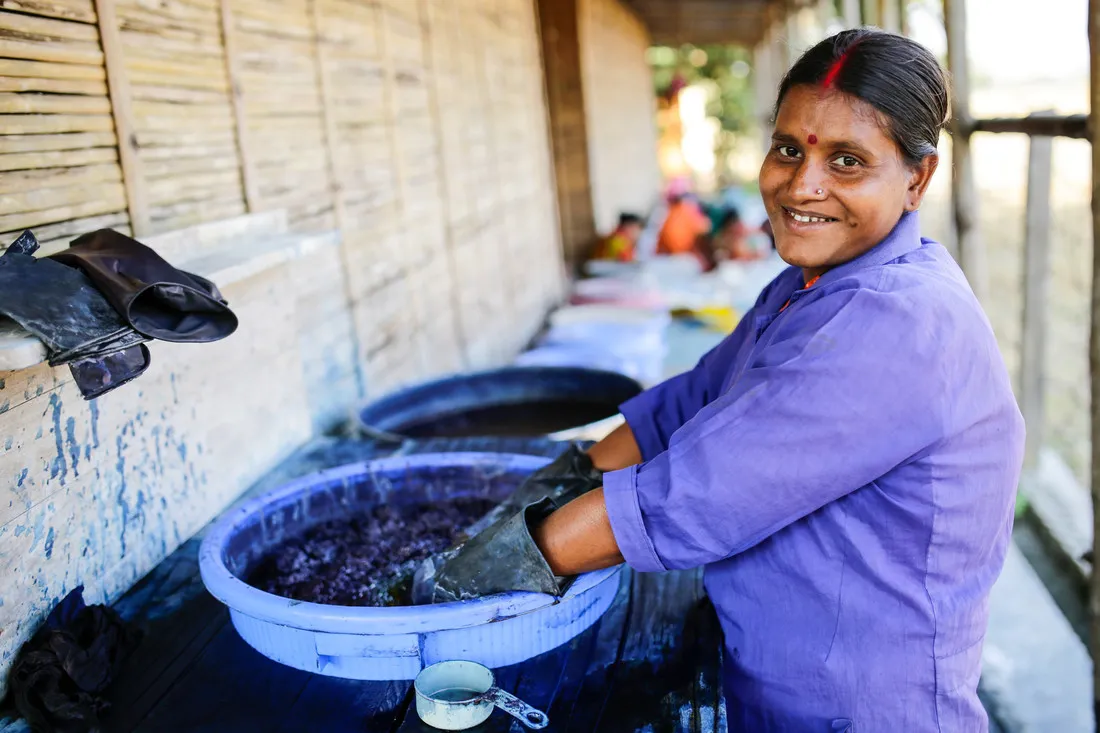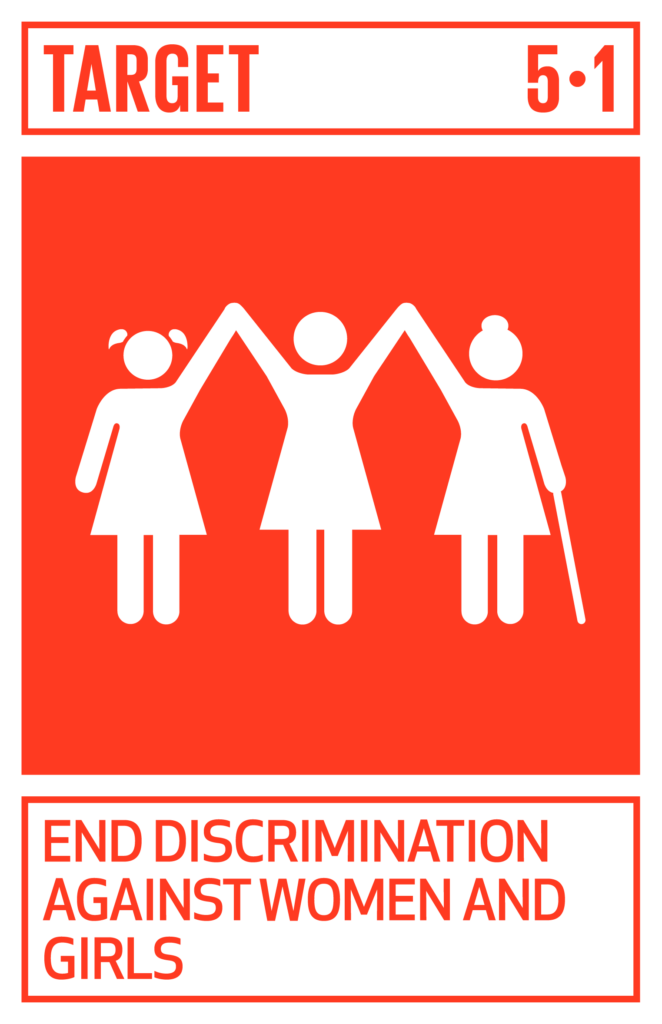 End all forms of discrimination against women and girls everywhere.
End all forms of discrimination against women and girls everywhere.
This target can feel like a big task but each of us and our organizations can make small decisions that end gender discrimination.
What you can do “in the field” to end discrimination against all women and girls:
- Follow policy
Follow your company’s gender equity and non-discrimination guidelines in recruiting, hiring, performance reviews, training, and sourcing. - Engage men
Engage men in why gender equality makes your company and your community stronger.- To ensure any efforts to engage men are productive and well-designed, CARE recommends working with expert organizations (typically, non-profits) to identify the proper methodology and build capacities in your company and/or deliver programming.
- For additional detail, visit CARE Insights
- For an example of a successful collaboration to engage men toward gender equality, please visit the
MenEngage Alliance
- Training
Ensure that women and men receive an equal number of training hours per year and that the training is of equal quality. - Employee Reviews
Ensure that women receive an equal number of performance and career development reviews as men. - Equal Pay
Ensure that women and men are paid the same for the same positions at every employment level.- If no review of pay equity has been completed, ask your company to support regular audits and reviews of pay, including bonuses and overtime pay, and to develop a plan to correct any the gender wage gap.
- Broadly, the companies that do the best work here are adopting policies that support ILO convention 190 and promote equal pay, protection against violence and sexual harassment. Ask your company to promote transparency about pay, women’s rights, and ways for women to claim their own rights.
- CARE consults with companies worldwide to review their practices and develop dashboards and strategies for achieving gender equality under ILO Convention 190 rules. We do this with a focus on workplace conditions, ethical supply chains, and women’s empowerment.
- Paid parental leave
Establish and support paid parental leave time for men and women. Ensure a workplace culture that supports paid parental leave and does not stigmatize it for any gender. Also, make sure that your company’s parental leave policy is available and supported across the company, in every country, and in each work location where it operates.- Ensure that those taking leave have their position guaranteed upon return and that paid parental leave is available throughout your organization and not just at senior or middle management.
- Flexible work
Where possible allow for flexible working hours so that parents may take care of children or aging parents. - End violence and harassment at work
This is critically important to achieving gender equality. Although women and men experience violence and harassment at work, given gender norms and power dynamics, women are far more exposed to violence and harassment. There is a lot you can do to end workplace harassment.- Please see recommendations for Target 5.2 for more steps you can take to end violence and harassment at work.
- Discipline
Review your disciplinary record for employees and determine whether rules and corrective action are applied equitably and fairly across gender. - Suppliers
Do you have an inclusive supply chain? Establish policies and practices to promote economic inclusion when selecting suppliers. For example, seek out and solicit (1) suppliers owned by women; and (2) suppliers owned or staffed by members of vulnerable, marginalized or underrepresented social groups.- While this is important in any location, it can have an outsized positive impact in rural areas where there is less economic opportunity than in cities. Please see the recommendations in this report for “In the Supply Chain” for more detailed suggestions.
- Externally
Look for local community efforts and organizations to support with company approval. - Advocacy
Support your company’s advocacy for gender equality laws and initiatives including but not limited to:- expanding the definition of discrimination against women
- equal pay for work of equal value
- work prohibitions
- family leave
- inheritance/property
- nationality
- human and labor rights in trade policy
- marriage and divorce
- violence against women
- quotas
- pensions
- legal capacity
Case Studies
 Mars
Mars
Mars recognized that its advertising and marketing reach could be a force for gender equality. To that end, the company has worked to remove gender bias and negative stereotypes in its advertising by becoming a founding member of the UN Women’s Unstereotype Alliance and increasing access to opportunity by mandating that agency bids include a female director. Additionally, Mars annually reviews its advertising to identify and reduce gender bias in partnership with the Geena Davis Institute on Gender in Media. The company is using these insights to track and improve its performance.
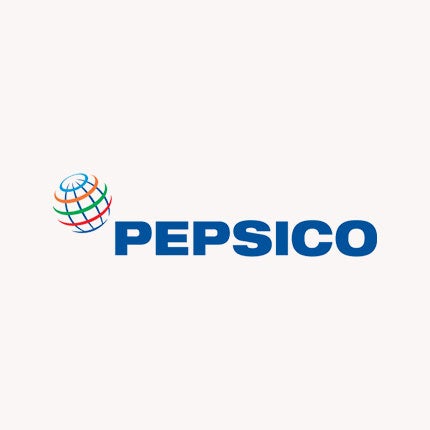 PepsiCo
PepsiCo
PepsiCo made a firm commitment to having 50% of management roles held by women. In doing so, they implemented a number of programs that benefitted women at all levels of the company. These initiatives included:
- Developing a Transformational Leadership Program (TLP) designed to equip women with the tools they need to elevate their business impact and achieve career fulfillment. By providing participants with the knowledge and skills to navigate a global matrix organization and increase their effectiveness and influence, the TLP helps propel high-performing teams and innovation at PepsiCo in the U.S., Europe, Asia, Middle East, and North Africa across multiple functions and levels.
- Providing on-site childcare at Pepsico’s New York headquarters and near-site childcare at PepsiCo Foods North America headquarters in Texas. The company also provides on-site or near-site childcare at international locations, including Mexico, India, Egypt, and Pakistan.
- In more than half of company locations worldwide with 500 or more employees, the company has either dedicated mother’s rooms, wellness rooms, or alternate space available for nursing mothers and the company is actively working to expand the number of PepsiCo locations with facilities for nursing mothers in the coming years.
- Making available back-up child and elder care services are available through third party providers when a regular care provider is unavailable.
- Launching “Ready to Return” in 2017 in New York for professionals who are re-entering the workforce after taking time off to care for a loved one. Ready to Return is a 10-week paid program designed for experienced professionals who have been out of the corporate workforce for more than two years and are looking to return. To help ease the transition, participants are provided with mentoring and coaching support, training to refresh skills and formal and informal networking opportunities with PepsiCo employees. In 2018, Ready to Return was expanded to Latin America, and now includes Brazil, Chile, and Mexico. This program is a demonstration of PepsiCo’s support for working caregivers in our communities around the world and a means to build the female talent pool at PepsiCo.
- Expanding parental leave in the U.S., starting in 2021, to be 6-8 weeks for mothers and 6 weeks for parents — a total of 12-14 weeks
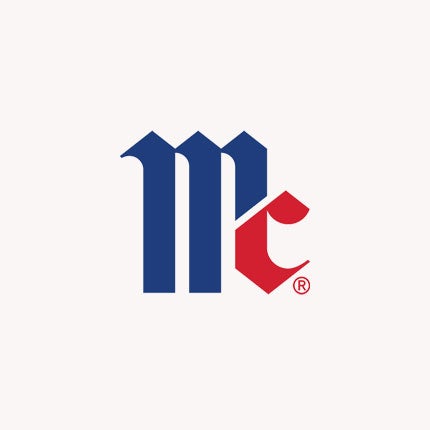 McCormick
McCormick
McCormick & Company, a global leader in flavor, launched their Purpose-led Performance (PLP) sustainability strategy in 2017 with a commitment to improving the lives of people, communities, and the planet, but more specifically, the Company aims to increase the resilience of farmers, including women, across their global supply chains. To achieve this, McCormick partnered with CARE to (1) diagnose the roles that women played in their supply-chains; the challenges they face, and the risks these pose to resilience; (2) design a global framework to increase resilience and achieve its PLP goals, including increasing the resilience of women in their supply-chain; (3) deliver programming that supports communities, including in COVID-19 response; and (4) document the impact of this work so that McCormick can make strategic business decisions around resources and understand what is improving, where and how. Through a deep dive into McCormick’s supply chain, CARE developed a dashboard that allows McCormick to clearly see the risks that women face, and make effective resource-allocation decisions accordingly, that deliver on their PLP goals.
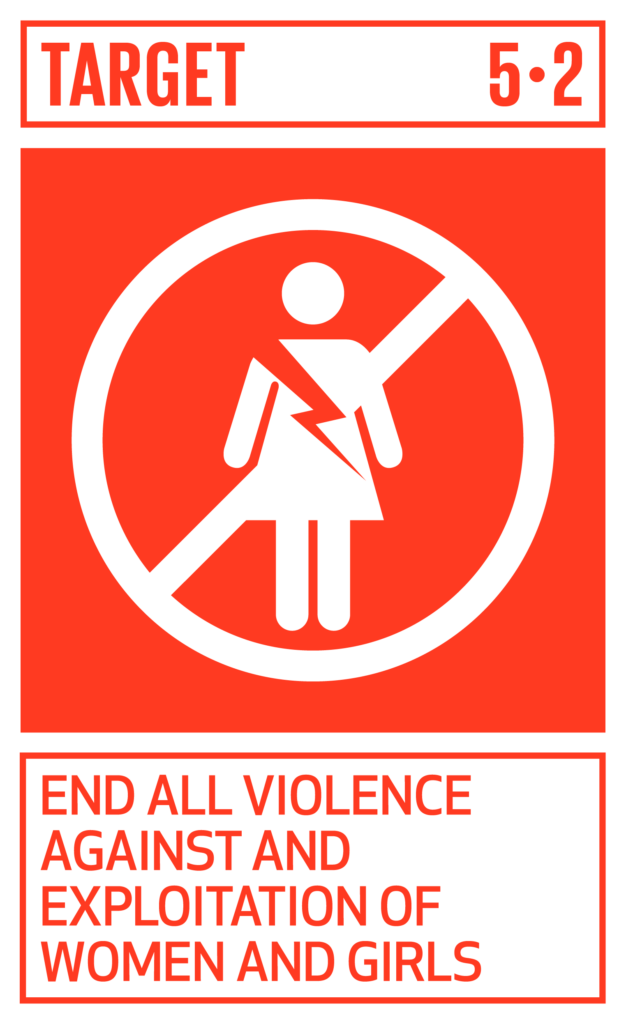 End all violence against and exploitation of women and girls.
End all violence against and exploitation of women and girls.
Keeping everyone safe and free from gender violence is fundamental to a healthy society and workplace. Companies can play a significant role in ensuring workplace safety and changing social and legal norms to end harassment, violence, and exploitation of women and girls. It’s also good for business and worker retention.
What you can do “in the field” to end harassment, violence, and exploitation of women and girls:
- Have a clear, firm policy
Establish and support a zero tolerance policy towards gender-based violence and harassment. Ensure there is a confidential complaint process. Be clear. No ambiguity.
- Follow policy
Follow your company’s gender equity and non-discrimination guidelines in with respect to sexual harassment and abuse. - Engage men
Engage men in why gender-based violence is not tolerated and why gender equality benefits us all. Here are steps you can take to engage men. To ensure efforts are productive and well-designed, workshops and programming may be best organized and guided by a third-party, like CARE:- Create structured spaces for men and boys to reflect on masculinities, gender, power and privilege in their lives.
- Allow for conversations with intimate partners, and within families to promote more open communication, equitable relationships, nonviolence, support and trust.
- Bring men together to talk and share testimonies. This will strengthen relationships among male allies to build and expand social support and solidarity against gender-based violence.
- Support men to facilitate discussions and campaign around gender and masculinities to transform social norms; (See, for example, AB InBev’s #NoExcuse initiative in South Africa to change gender norms).
- For additional detail, visit CARE Insights
- For an example of a successful collaboration to engage men toward gender equality, please visit the MenEngage Alliance
- Engage women
Ensure women understand their rights and protections by organizing training and information sessions and using creative ways to promote learning this information. Here’s an example of work CARE did with women construction workers in Cambodia. - Create workplace champions
Identify individual champions or key figures to promote cultures of change and more equitable working conditions. Researchers in Australia recommend champions be in leadership and middle management to enlist greater support and buy-in for a given approach. Organizations should ensure the role doesn’t fall to one of the few women in positions of leadership. - Build a strong culture that ensures safety and equity
- Give surveys to workers regarding sexual harassment allowing employees to share what they have witnessed and/or heard about and what actions to take in response to any incidents.
- Communicate to workers about the company’s gender equality objectives and hold events around key days (e.g. International Women’s Day, International Day of the Girl).
- Ensure that workplace training and communications highlight the role that norms play in perpetuating sexual harassment and promote positive norms instead.
- Monitor norms and practices with worker surveys regarding sexual harassment incidents that are witnessed and/or heard about and communicate what actions were taken/not taken in response to incidents.
- Encourage bystanders to sexual harassment to intervene.
- Review company practices, like incentive structures, to ensure that they are not creating an environment where harassment occurs.
- Hold suppliers to same standard
Require employers along your company’s value chain to have a policy of zero tolerance towards gender-based violence and harassment. For more specific steps to promote gender equality through your value chain, please visit the “In the Supply Chain” section of this playbook. - Give appropriate training
- Training should be conducted regularly, contextualized to the organization. However, reaching everyone does not mean everyone gets the same intervention. Vary training for different communities and groups to ensure relevance across diverse populations. For example, men-only programs may promote honest and reflective discussion among men that challenge socially constructed views of masculinity.
- Develop materials and messages in consultation with local violence-against-women service providers. Training should be provided by trainers who are content experts, authentic, and empathetic. For example, the gender of a trainer may be important to create an environment where people can participate freely. In design, training should be intensive and provide opportunities for continued engagement, such that participants can address underlying attitudes and build new norms and behaviors. Training that is interactive and participatory can support new norms and shared meanings while changing attitudes, values, skills, and new ways of relating.
- When working with employees who are issuing a complaint, maintain the following principles
- Confidentiality – employee identity and identifying information will be kept confidential and private unless otherwise voluntarily agreed
- Ensure consent – take appropriate measures to secure immediate safety and refrain from actions which may result in future harm including in training and communications
- Do no harm – take appropriate measures to secure immediate safety and refrain from actions which may result in future harm including in training and communications
- Adopt a victim- and survivor-centered approach – recognize that the rights, needs and wishes of victims, survivors or complainants are to be placed at the center of action and for these individuals or groups to be treated with dignity and respect
- Ensure equal treatment – refrain from discriminating based on gender, sexual orientation, age, ethnicity, ability, migrant status, contractual status, marital status, education status, or otherwise
- Advance policy and future interventions – draw from the findings and lessons from cases of sexual harassment to raise awareness and to inform future preventive and response measures
For additional reference:
CARE’s STOP Sexual Harassment project Visit the website
CARE Australia delivered this summary report on what works to stop sexual harassment in the workplace. Read the report
CARE partnered with Business Fights Poverty to help develop this toolkit for how business can address gender-based violence. Read more
Case Studies
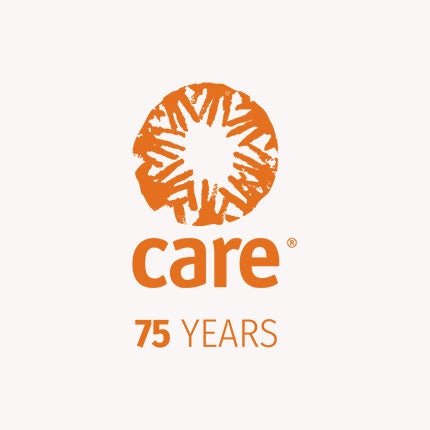 CARE
CARE
In Myanmar, CARE and NGO partners have collaborated to promote action by the labor movement to prevent violence and harassment in the workplace. Unions in Myanmar are increasingly recognizing the importance of the issue, reflected in increased requests for training and technical support. The Confederation of Trade Unions in Myanmar (CTUM) has worked with CARE to strengthen their activists’ capacity to understand and recognize sexual harassment. They are now taking action to protect the rights of CTUM’s 65,000 members through campaigning, raising complaints, and demanding action by factories.
Sexual harassment prevention is also increasingly included as a critical demand of workers for negotiation and bargaining.
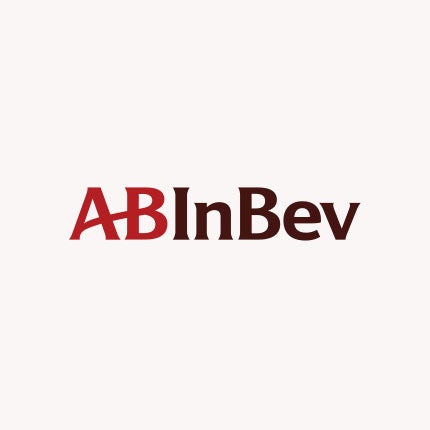 AB InBev
AB InBev
In South Africa, where the rates of gender-based violence are incredibly high, AB InBev, launched a multi-year #NoExcuse campaign to change society’s views and tolerance of GBV. Using the beer, Carling Black Label, as an entry point to grab the attention of men, AB InBev produced several videos and initiatives to empower men to change their behavior at the call of other men. From sporting events, radio, to social media, the #NoExcuses struck at the heart of what it means to be a “Champion” man and provided resources and opportunity for men to change their behavior and fight GBV. Moreover, in 2020, as COVID-19 led to stay-at-home quarantine, domestic violence calls skyrocketed. AB InBev expanded the #NoExcuses campaign to include a dedicated WhatsApp line for women and men to use to discretely report GBV and to seek assistance.
 Google
Google
Today, women are 27 times more likely to experience online violence than men. This is why Women Techmakers, Google’s flagship program supporting women in technology, launched a campaign in partnership with Jigsaw to train and engage women developers to build scaled technical solutions to keep women safe online. Now running in five regions, Google’s goal is to train 50,000 women in online safety by the end of year. In support of domestic abuse survivors impacted by shelter-in-place, Search and YouTube, together with the National Network to End Domestic Violence (NNEDV), launched a campaign called #ISeeYou to increase the visibility of available services to women globally. Alongside the campaign, Google granted $2 million in Search ads to domestic violence organizations to show our support for reducing domestic violence.
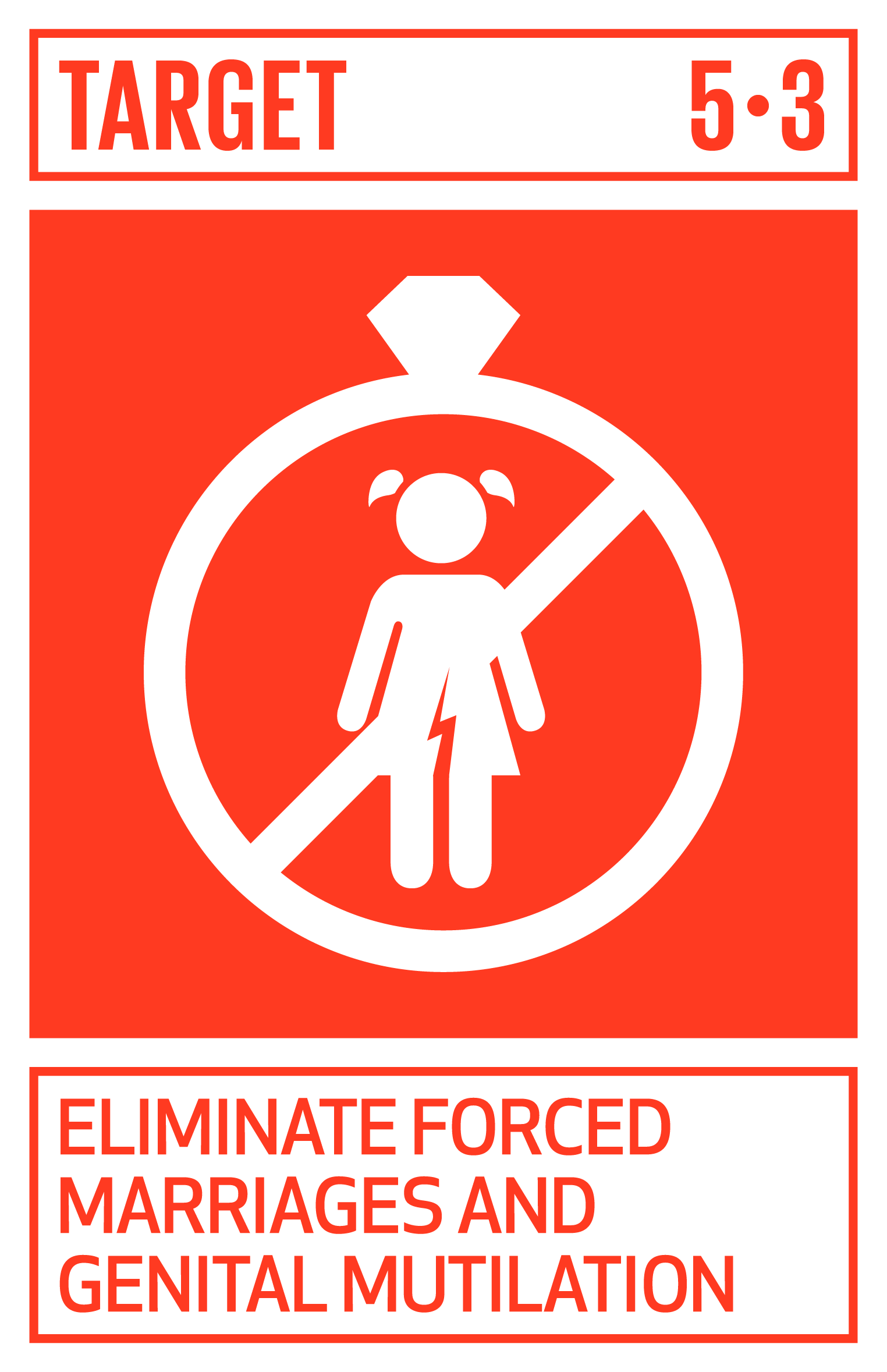 Eliminate all harmful practices, such as child, early and forced marriage and female genital mutilation.
Eliminate all harmful practices, such as child, early and forced marriage and female genital mutilation.
While your day-to-day work may not lend itself to addressing the issue of forced marriages and genital mutilation, companies can and should play a role in changing harmful practices that disadvantage and hurt women and girls.
What you can do “in the field” to eliminate harmful practices:
- Follow your company’s gender equity and non-discrimination guidelines with respect to sexual harassment and abuse.
- Work with your company’s advocacy team to develop strategies for changes to national and local laws to eliminate harmful practices.
- Host workshops for employees and suppliers on why certain practices are harmful. To ensure any efforts are productive and well-designed, CARE recommends working with expert organizations (typically, non-profits) to identify the proper methodology and build capacities in your company and/or deliver programming.
Case Study
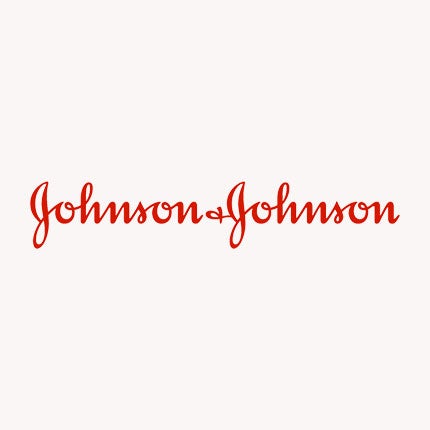 Johnson & Johnson
Johnson & Johnson
In Ethiopia’s Amhara, where rates of child, early and forced marriage are high, Johnson & Johnson implemented Towards Improved Economic and Sexual Reproductive Health Outcomes for Adolescent Girls in Ethiopia (TESFA) to address the economic rights and sexual and reproductive health of ever-married girls. Between 2015-2018, CARE worked with married adolescent girls and developed tested approaches to support positive changes in their lives. TESFA scaled up geographically, reaching 2,124 ever-married girls in 12 kebeles across the woredas of Farta and Gunabegemider. This project has been critical in replicating and geographically scaling a proven program model to improving girls’ sexual reproductive health and economic empowerment, and has advanced innovations in measuring social norms.
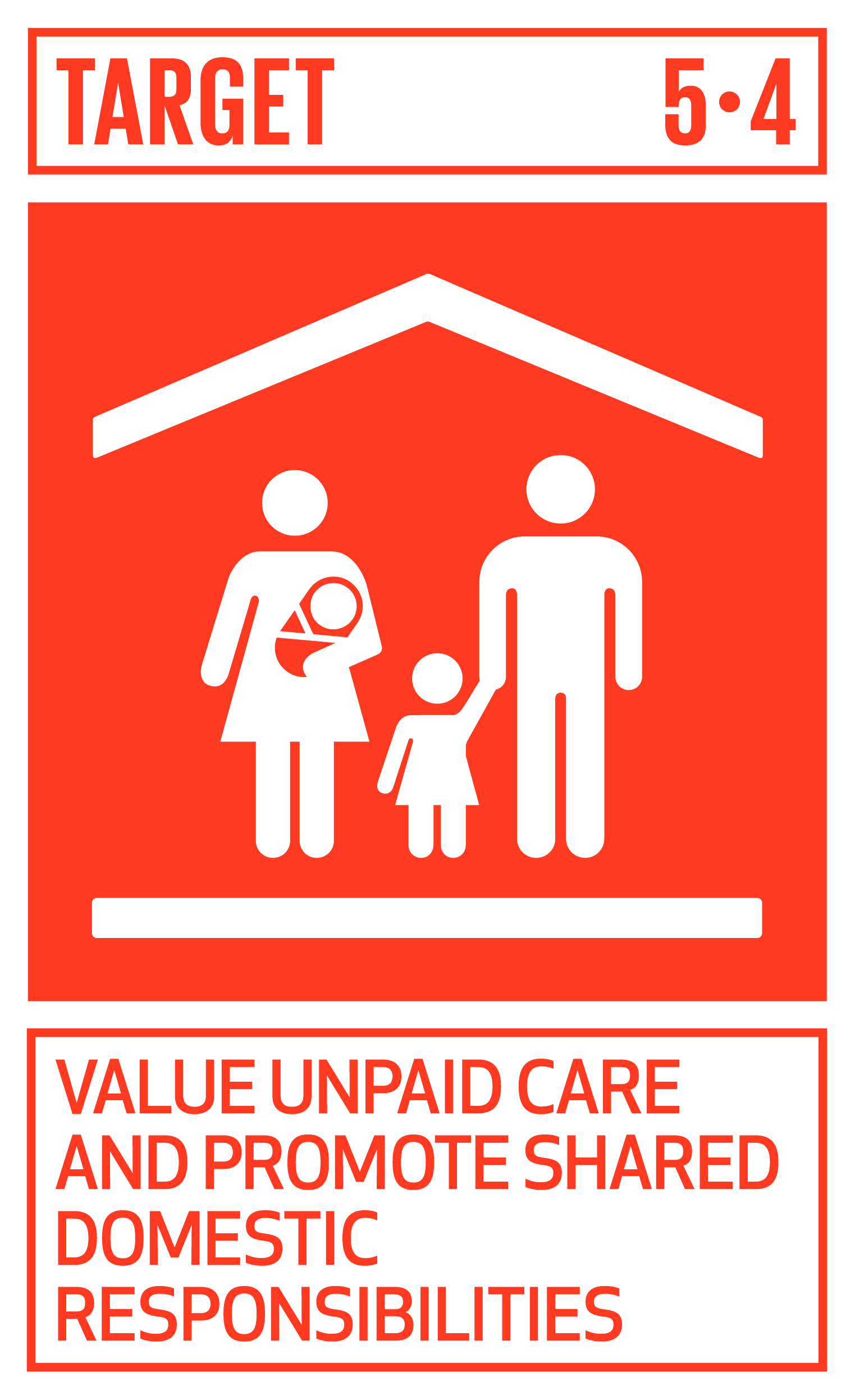 Value unpaid care and promote shared domestic responsibilities.
Value unpaid care and promote shared domestic responsibilities.
Unpaid care is a significant barrier to women’s economic activity because they do most unpaid caretaking and domestic labor. Globally, women spend over three times more time doing unpaid work and care than men. When women also carry a paying job, they bear a double burden.
Companies can and should play a significant role in valuing unpaid care, providing flexibility and space for employees, and changing social norms about caretaking. Doing so increases employee productivity, recruitment, and retention, creates stronger supply chains, and increases customer loyalty.
For systemic change, government, business, and civil society need to do their part to complete the “5 Rs”:
- Recognition of care work as productive, which adds value to the economy and society;
- Reduction of total hours spent on unpaid services;
- Redistribution at the household level, while shifting responsibility to governments and employers; and
- Representation of the most marginalized caregivers in decisions on and design of care policies, services and systems.
- Reward through decent working conditions and equal pay for work of equal value, so as to protect a workforce largely made up of women.
Companies can value and support caretaking through Nos 1, 2, and 5: Recognition, Reduction, and Reward.
What you can do “in the field” to value unpaid care and promote share domestic responsibilities:
- Provide childcare
Create day care and other childcare spaces near the fields and in company facilities.- If your company cannot provide childcare directly, subsidize childcare offsite.
- The same applies to healthcare. Consider partnering with local healthcare providers to offer a healthcare clinic during an off-day in the communities where the majority of workers live.
- Provide easy access to breaks for breastfeeding mothers
Providing easy access to breaks for breastfeeding in a private space enables these women to step away without worrying about retribution for stepping away to take care of their health and their child’s health.
- Allow family-friendly flexible work
Implement and encourage flexible working arrangements. This might include allowing for different work hours and work days, allowing for remote meeting participation where possible, and onsite nursing facilities. - Give specific days off for doctor’s visits
Allowing specific days per month for workers to attend doctor’s appointments can improve worker’s wellbeing and productivity. This can be structured to avoid any challenges to production goals. - Set up a “Relief Team”
Consider putting in place a team that can replace workers who are absent for healthcare needs. - Extend Flexibility to Part-Time Workers
Extend flexible working benefits to allow for caretaking to part-time and temporary workers. - Ask women to shape policies
Ensure women’s leadership in and equal contributions to designing, implementing and evaluating policies related to childcare, work schedules, etc. - Engage men
Institute workshops and programs that promote equal responsibilities and engage men and boys. Many men are unaware that everyone benefits when they share domestic and care responsibilities.- To ensure any efforts to engage men are productive and well-designed, CARE recommends working with expert organizations (typically, non-profits) to identify the proper methodology and build capacities in your company and/or deliver programming.
- For additional detail, visit CARE Insights
- For an example of a successful collaboration to engage men toward gender equality, please visit the MenEngage Alliance
- Change social norms
Promote the equitable responsibility for care between women and men through advertising campaigns and flexible work schedules.
Additional resources include the following:
- Oxfam/Unilever’s Business Briefing on Unpaid Care and Domestic Work: Why unpaid care by women and girls matters to business, and how companies can address it Read more
- Work and Opportunities for Women Read more
Case Study
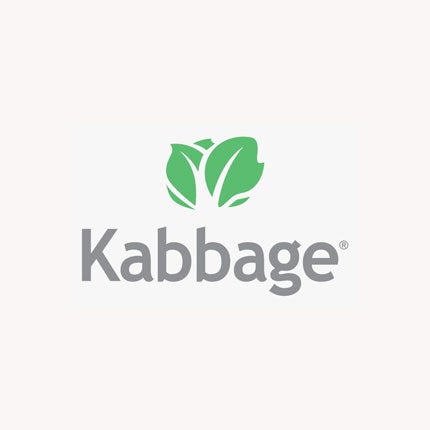 Kabbage
Kabbage
Recognizing that many employees have long commutes to the office, Kabbage, implemented flexible work schedules to allow for shared domestic responsibilities. They quickly found that worker productivity or output did not diminish and that both male and female colleagues felt less stress to rush home.
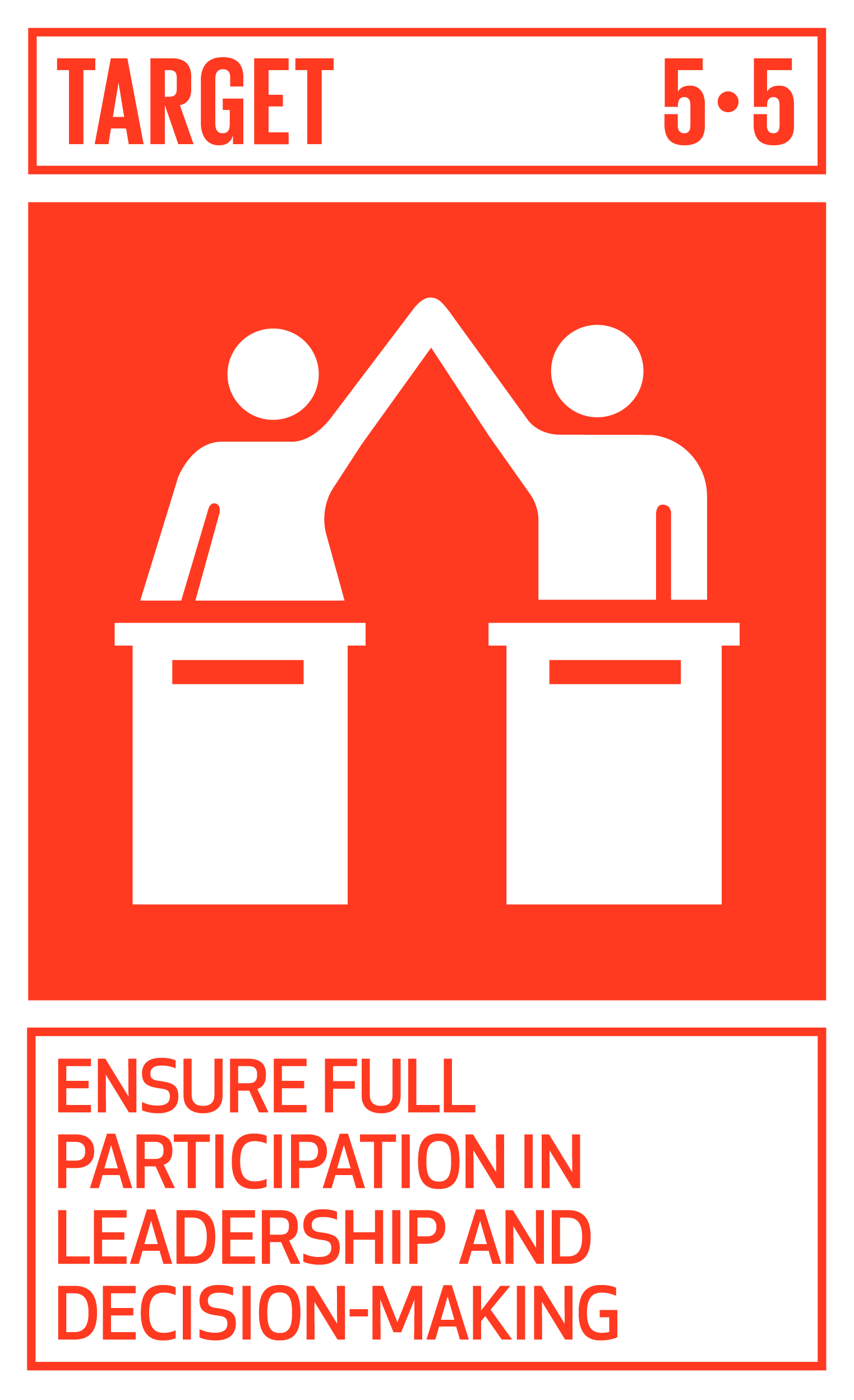 Ensure full participation in leadership and decision-making.
Ensure full participation in leadership and decision-making.
When women lead, outcomes are often better than when women are not in decision-making roles. One of the key indicators for this target is the percentage of companies in any given country with a female as the top manager, and the share of middle or senior management positions filled by a female. Here, companies play a central role in achieving gender equality.
What you can do “in the office” to ensure full participation in leadership and decision-making:
- Hire equal
Ensure your hiring practices are gender-equal. - Train and promote women
Look for every opportunity to train and promote women to leadership positions. - Hire women at every level
Work to increase representation of women in management positions, skilled (non-management) positions, and unskilled jobs.
- Give voice and connect women to leaders
Empower women to speak up about unequal treatment without fear of or actual retribution. Promote worker-based committees and spaces for women leaders to connect with and influence factory leaders and other decision-makers. - Partner with gender-equal entities
If your company has business relationships with farmers’ cooperatives or associations, consider working only with those that have a significant proportion of women representatives in leadership positions and women members in farmers’ cooperatives and/or associations. - Engage in the community
Look for ways to influence positive gender outcomes in the communities where your company works. This may include partnering with local non-profits and engaging family members of your employees. Efforts to build women’s skills, capabilities, and access to resources, so they are better enabled to make decisions, both productive decisions and household decisions, and fully participate in economic activity, are vital to increasing the number of women in leadership roles.
Case Study
 Cargill
Cargill
In many developing countries, women comprise, on average, 43% of the agricultural workforce. Women are at the heart of many farming communities and are a vital link between farms and families. Yet, they are often excluded from key decisions about their farming household, economic activities, and community decisions.
Cargill is a global provider of food, agriculture, financial and industrial products with 155,000 employees across 70 countries. The company connects farmers with markets, customers with ingredients, and people and animals with the food they need to thrive. Cargill combines 155 years of experience with new technologies and insights to serve as a trusted partners for food, agriculture, financial and industrial customers in more than 125 countries. The company contributes at each stage in the supply change to build farmer and community resilience. This work allows Cargill to deliver its purpose to nourish the world in a safe, responsible, and sustainable way.
For the last 12 years, one of the programs that Cargill and CARE have partnered on, has been the Nourishing the Future program in Central America; which aims to support smallholder producers across the region. Cargill brings knowledge of markets, supply chains, best practices in agricultural production and food safety to build on CARE’s expertise of building strong resilient communities through multiple sets of interventions, taking a holistic approach to address the challenges these communities face. In this work, Cargill and CARE have focused on ensuring women producers are included and are able to make their own decisions to improve productivity and market access.
CARE has also been creating groups of women promoters to act as a change agents by transferring their knowledge to other women and men. During 2020, Cargill supported CARE to continue training for these producer groups through employing virtual tools and working to ensure that women were able to access these tools. The Nourishing the Future program is also enabling women to become members and leaders of Farmer Business Organizations, helping them to be part of decision-making processes and empowering them in their farming businesses.
Cargill’s work has enabled strong market linkages for agricultural communities, including the integration of producers into its grain supply chains, as well as helping to establish livestock and aquaculture production activities. It has also improved agricultural production through its comprehensive farmer field school training curriculum. Lastly, Cargill worked with communities to build women’s skills, capabilities, and access to resources. Hence, they are better enabled to make decisions, both productive decisions, and household decisions, and fully participate in economic activity. Together, these interventions have led to more equal household decision-making, improved nutrition, increased incomes, enhanced agricultural production, and stronger market connections. Between 2008-2020, CARE and Cargill reached 689,357 women in Central America through our Nourishing the Future programming (67,341 directly and 622,016 indirectly).
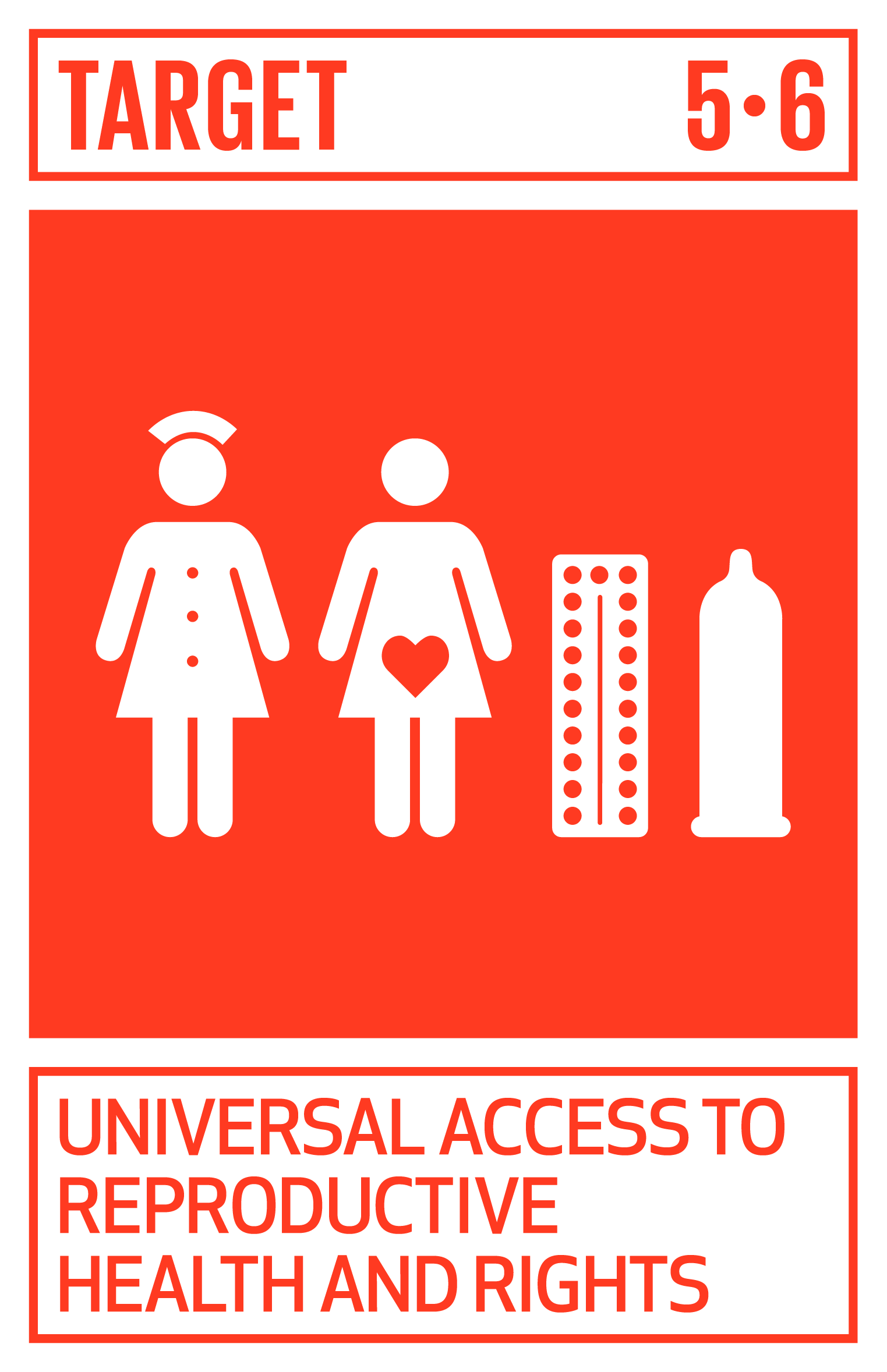 Universal access to reproductive rights and health.
Universal access to reproductive rights and health.
When women control their own health care decisions, including reproductive health decisions, and have access to health care, their ability to thrive, at work and at home, increases. Companies play an important role in providing the benefit of access to care in many countries and in promoting the norms that allow for accessible reproductive care.
What you can do “in the field” to provide universal access to reproductive rights and health:
- Provide benefits
Provide benefits that cover reproductive health services. This will vary from country to country. - Set the tone
Encourage women to take the time to go to the doctor and take time to care for their health. - Make a public commitment
Publicly celebrate and encourage health through workplace programs and expertise to reach women with needed information and services. - Provide information
Access to basic health information can be difficult to find, especially for women. You can help connect your workers to information on family planning, menstrual hygiene, nutrition, and pre-natal care. - Support agency of workers
Ground health care policies in volunteerism and informed consent. Support a woman’s ability to choose when one becomes a parent. - Advocate
Where legal change is necessary, work with your company’s advocacy team to ensure the law empowers women to make their own informed decisions about their reproductive and physical health, including, for example: determining whether to have sexual intercourse with their husband or partner; deciding on use of contraception; and deciding on their own healthcare.
Case Study
 Kabbage
Kabbage
Kabbage, an American-based financial services firm that provides small business loans, offers free healthcare to its employees, including reproductive health services.
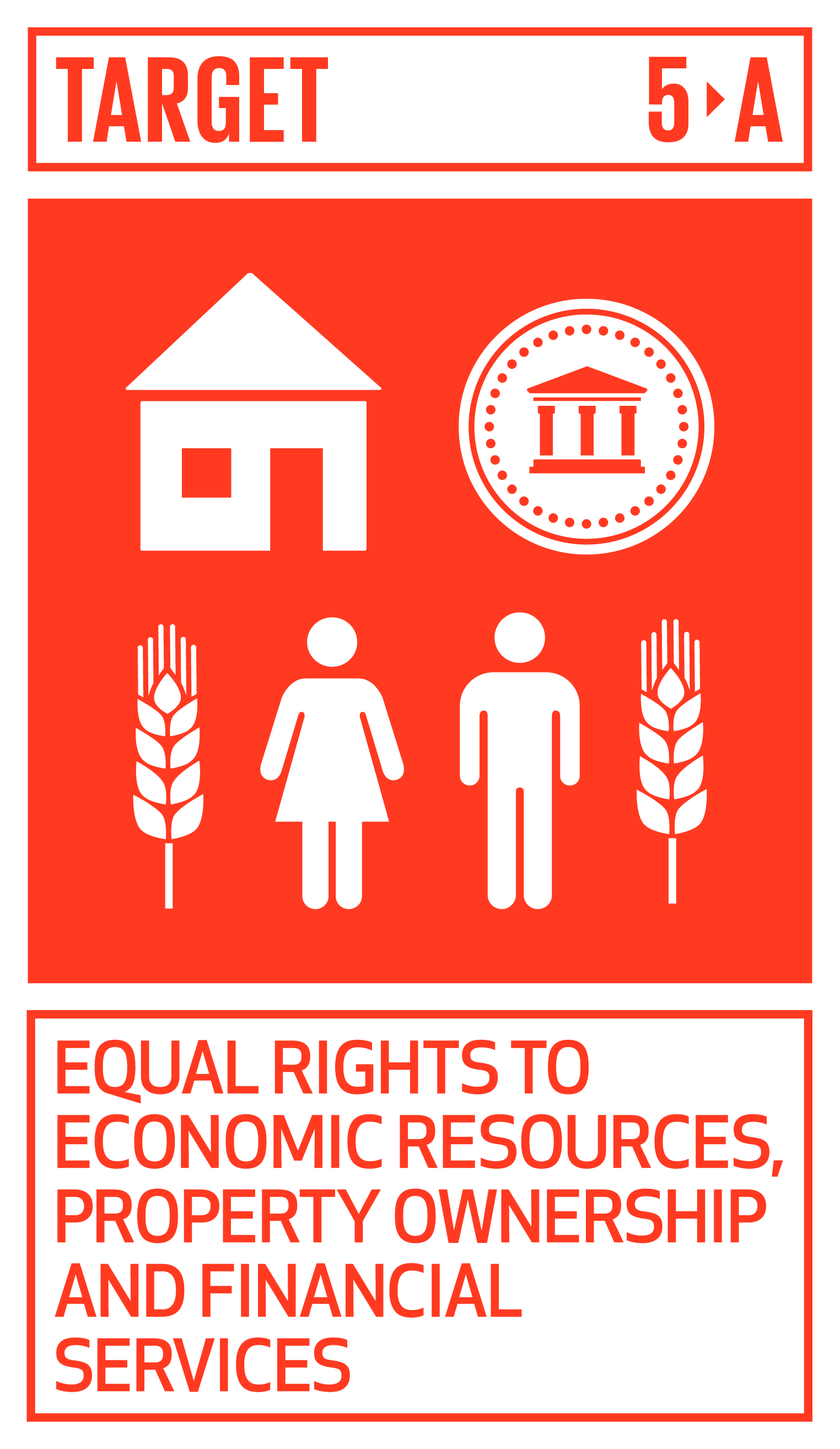 Equal rights to economic resources, property ownership and financial services.
Equal rights to economic resources, property ownership and financial services.
Agricultural land ownership is one of the most critical mechanisms for women to build wealth and economic stability. Companies can increase the proportion of women who own or secure rights over agricultural land.
What you can do “in the field” to provide equal rights to economic resources, property ownership and financial services
- Connect women to resources
Support connecting women to financial services through savings groups, mobile money, and financial services that take women’s needs into account. CARE has set up Village Savings and Loans Associations across the world to help women build with financial resources to launch and support their businesses. - Advocate
Work with your company’s advocacy team to push for legislative and legal changes to allow for female-land ownership when it is prohibited and to ensure equitable access to capital and resources for female agricultural business owners.
Case Studies
 Cargill
Cargill
The Cargill Cocoa Promise is Cargill’s commitment to cocoa farmers and their communities, enabling them to achieve better incomes and living standards while growing cocoa sustainably. This includes a strong focus on giving women more access to economic opportunities, which is vital for strengthening the socio-economic resilience of cocoa farmers, families and communities. Such interventions also improve farm productivity, helping to secure cocoa as a livelihood for generations to come. Cargill works to upskill women in cocoa communities via functional and financial literacy training and entrepreneurship trainings. This has a positive ripple effect, since women tend to reinvest any earnings into their families and communities.
In partnership with CARE, across Ivorian and Ghanaian cocoa communities, the partnership supports people to access the resources, skills, and tools necessary to change their own lives. Cargill has specifically focused on facilitating access to savings and credit structures like Village Saving and Loans Associations (VSLAs) since 2008. VSLAs are established to create and support a strong savings culture in the community. Members are also able to take out small loans to build income-generating activities. These groups base their activities on trust, accountability, and transparency in all transactions. Savings and loan activities bring together neighbors who trust each other, and often these groups meet for many years.
CARE and Cargill understand the value these groups bring to communities and have focused on bringing credit closer to the farming families over the last decade. Among the chief lessons learned was to leverage technology to increase the pace of implementation and change at scale. Cargill and CARE’s VSLA approach has created an enormous value in the communities they serve, improving access to finance for women and men who are often excluded from formal financial systems. The VSLAs provide members a platform to access informal financial services and training across various topics, including financial literacy, business management, and diversification through income-generating activities.
The company aims to take the VSLA platform to the next level within the CARE-Cargill partnership, building a new generation of VSLAs that not only improve access to finance at the community level, but also open doors to the emerging digital economy. This includes digitization of the VSLA process using a shared digital platform to promote effective cashless systems by reducing security risks and increasing productivity. It also entails transforming a paper-based record system to an electronic system to improve tracking of loans and savings across VSLAs, enhancing group efficiencies, transparency, and data sharing. The evolution of VSLAs into the digital world will accelerate and deepen financial inclusion while increasing the usage of digital financial services in rural cocoa communities.
 PepsiCo
PepsiCo
Women’s work in agriculture—essential to meet the nutrition needs of a growing global population—is often unpaid and undervalued. Research shows that if women farmers had the same access to resources as men, they could increase yields on their farms by 20–30 percent, potentially reducing the number of hungry people in the world by up to 150 million. To that end, PepsiCo is the largest private sector partner in CARE’s She Feeds the World program, which is addressing gender inequality in the agriculture sector. The company’s $18.2 million investment aims to provide approximately 5 million female farmers and their families with education, resources and economic support that can help them increase crop yields and income. The program is active in Peru, Egypt and Uganda. In Uganda where the partnership with CARE first launched, PepsiCo has reached nearly 200,000 people with trainings that tackle issues like gender inclusive leadership, sustainable farming and sanitary food preparation.
 Mars
Mars
Mars recognized that for many agricultural raw materials, the least resilient link in the supply chain is the first one—where raw materials are grown and harvested. During COVID-19, pre-existing vulnerabilities in sourcing communities were compounded by disruptions including restrictions on movement and trade, changes in demand, currency devaluation, losses of work opportunities, and school closures. Moreover, women around the world face structural barriers that prevent them from thriving, especially in agriculture where raw materials are grown and harvested. Even after decades of progress, women make up two thirds of the world’s 775 million illiterate adults, carry out twice the unpaid care work, own only 20% of the world’s land and earn 24% less than men.
Recognizing these challenges and inequities, Mars committed to scale up its partnership with CARE with an investment of 10 million USD, aiming to reach more than 60,000 members in cocoa communities in Côte d’Ivoire and Ghana by 2025. Mars’ commitment expanded Village Savings and Loans Associations (VSLAs) that help women to save and invest in West African cocoa farming communities. Through VSLAs, women have access to financial inclusion and connection to formal finance, as well as business skills and entrepreneurship training. By the end of 2020, Mars had reached more than 24,000 VSLA members, who have saved 2.9 million USD to date.
In response to the COVID-19 pandemic, Mars also made an initial $5 million contribution to CARE focused on COVID-19 response and recovery across high-risk priority supply chains focusing efforts on women and girls. **Working with CARE to get final impact numbers to date, please include**
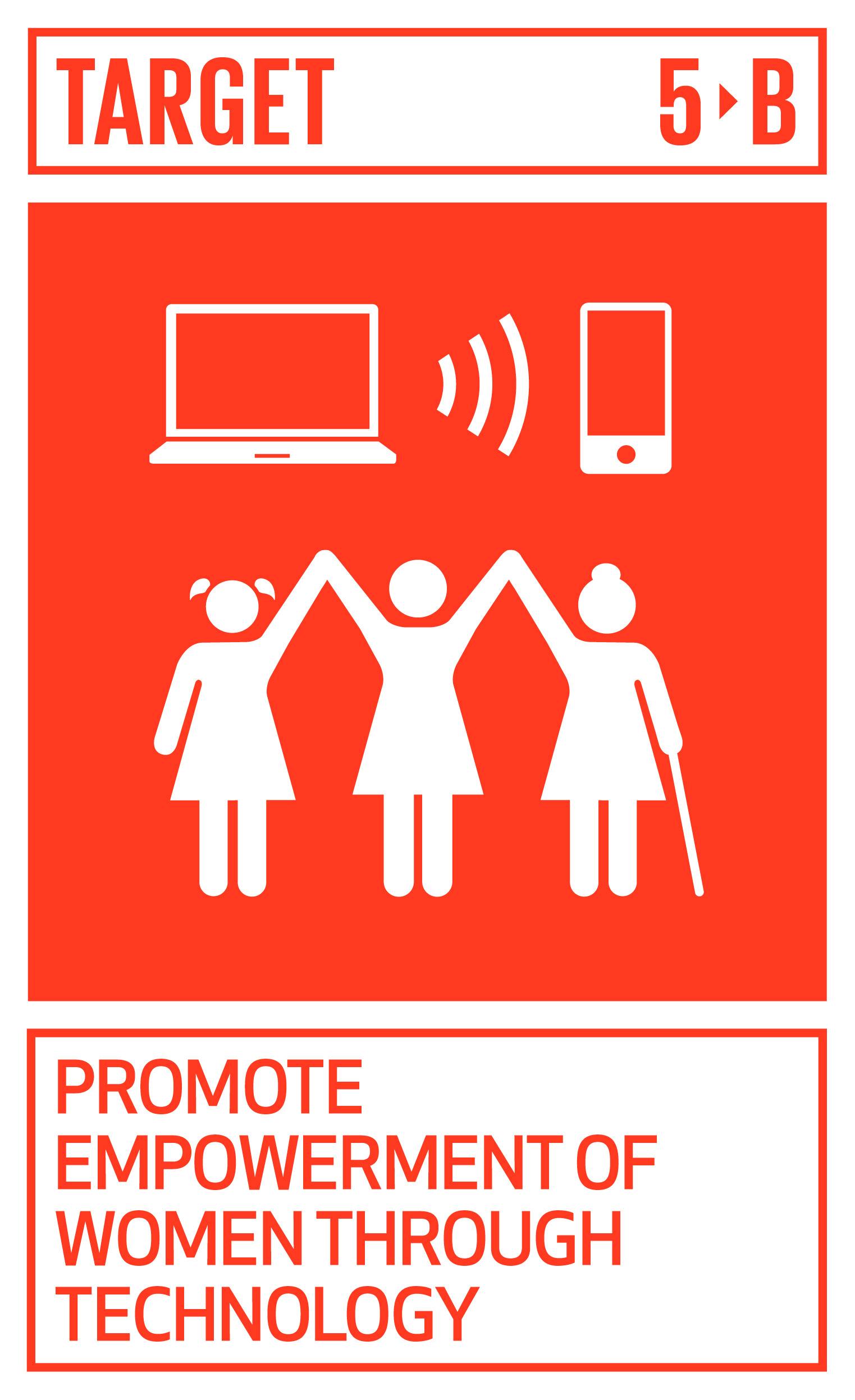 Promote empowerment of women through technology.
Promote empowerment of women through technology.
Technology can lower barriers for financial access, communication, and female empowerment. Companies have the opportunity to leverage technology to use technology to achieve gender equality in significant ways.
What you can do “in the field” to promote empowerment of women through technology:
- Provide access
For workers of all types, your company can provide access to information and technology and use technology to increase women’s participation in programs. - Provide privacy
Allow workers to submit surveys, complaints, and concerns through technology so that they can speak freely. - Provide digital wages
This can save time for women and ensure they can directly access and control their wages by helping them to send, save and make payments securely through their mobile phone.
Case Study
 Cargill
Cargill
IDH, Cargill, Advans and CARE are working with cocoa producing communities on innovative solutions such as mobile money accounts or digital loans, as well as connecting the VSLAs to more formalized financial lending systems and institutions. CARE has been facilitating access to financial services for 27 VSLA groups to increase working capital, stimulate the promotion of a savings culture, and improve the quality of financial services. Between 2019-2020, these VLSAs were linked to a microfinance institution called Advans. Advans has signed a partnership with a mobile phone company to facilitate secured monetary transactions for VSLAs. To date, these VSLAs have $2,247 in invested savings with Advans. VSLA members are looking to use their savings to invest in business expansion activities, including processing, trading, transportation of agricultural products and animal husbandry. In the coming months, Cargill and CARE will focus on linking 40 more VSLAs with microfinance institutions to further secure their savings and increase the amount of loans they can access to expand their income generating activities.
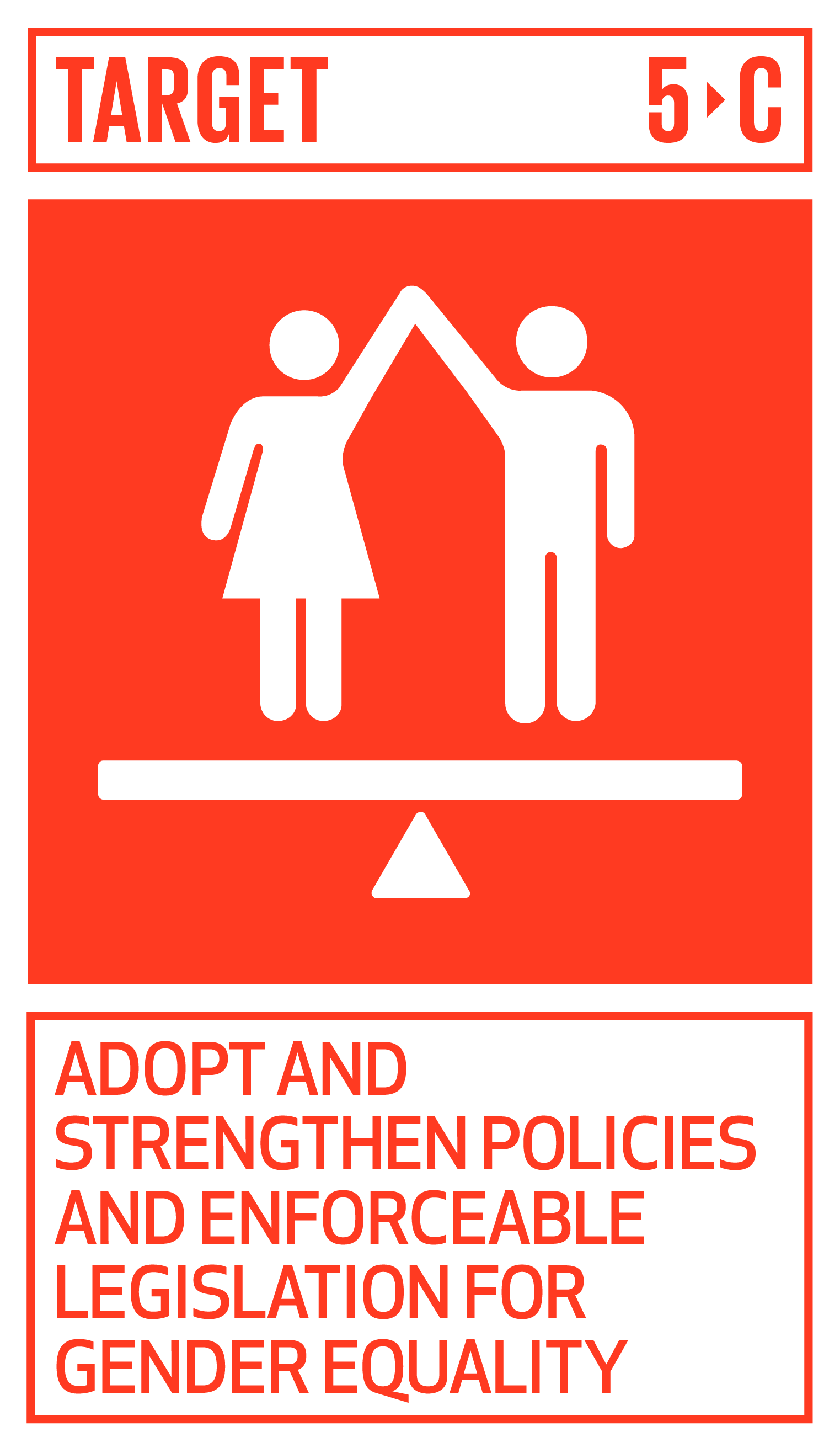 Adopt and strengthen policies and enforceable legislation for gender equality.
Adopt and strengthen policies and enforceable legislation for gender equality.
Every company can advocate for legislative action and legal change in the countries where they operate. Indeed, the influence and voice of the private sector can often shape political action.
What you can do “in the field” to adopt and strengthen policies and enforceable legislation for gender equality:
- Work with your corporate advocacy team to identify legal changes that will strengthen women’s rights and protect women workers. Consider partnering with your suppliers and civil society organizations.
- Support your company’s advocacy for gender equality laws and initiatives including but not limited to:
- expanding the definition of discrimination against women
- equal pay for work of equal value
- work prohibitions
- family leave
- inheritance/property
- nationality
- marriage and divorce
- violence against women
- quotas
- pensions
- legal capacity
Case Study
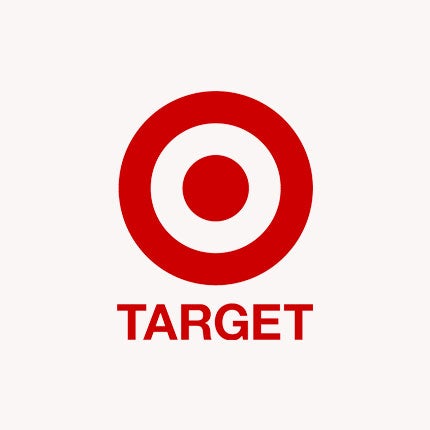 Target
Target
Target realized that its role in sourcing and manufacturing in Vietnam put it in a position to influence Vietnam’s labor standards for the better. Accordingly, Target supported CARE’s advocacy efforts to revise the Vietnamese Labor Code, which now includes reference to prevention of sexual harassment in the workplace – a term that was not included in the previous Labor Code, and an outcome that is the direct result of joint advocacy efforts. These labor code revisions were approved by the Vietnam’s National Assembly in November 2019.
Target is proud to have supported CARE’s efforts to influence revisions to the Vietnam Labor Code, creating alignment between labor law provisions on sexual harassment prevention and the ILO Convention on Eliminating Violence and Harassment in the World of Work.

